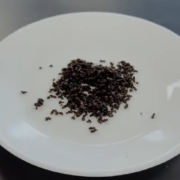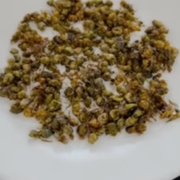Unlocking the unique flavour profiles of edible ants
While insects may not be the first choice for most when it comes to culinary delights, a team of researchers is shedding light on the diverse and intriguing flavour profiles of edible ant species. Their findings, presented at the American Chemical Society (ACS) Spring 2024 meeting, offer valuable insights for the food industry in exploring these readily available and sustainable protein sources.

The study, led by Changqi Liu, an associate professor of food science at San Diego State University, analyzed the volatile compounds and odour profiles of four edible ant species: the chicatana ant, common black ant, spiny ant, and weaver ant. Liu’s interest in edible insects stemmed from his experience leading a summer field study in Oaxaca, Mexico, where such delicacies are readily available in local markets.
“I’m interested in ants because I once led a summer field study in Oaxaca, Mexico,” Liu explains. “You can easily find different edible insects in the market there, just like other food ingredients.”
Identifying the volatile compounds present in each ant species
Utilizing gas chromatography-mass spectrometry and an olfactometer, the researchers identified the volatile compounds present in each species and matched them to their corresponding odours. Interestingly, some volatiles initially puzzled the team, as they were unable to detect any aroma – later revealed to be ant pheromones, which humans cannot perceive due to their alkane nature.
The common black ant, for instance, exhibited an acidic and vinegary smell, primarily due to its high formic acid content, a compound secreted from its venom glands. Conversely, the chicatana ants lacked formic acid and instead boasted a nutty, woody, and fatty aroma, attributed to the presence of aldehydes and pyrazines – the latter also contributing to the roasted smell of cooked meats and bread.
“Unlike common black ants, the chicatana ants tested did not contain formic acid, and their predominant smell was nutty, woody and fatty,” Liu notes. “The researchers attributed fatty, grassy odours to the presence of aldehydes. They say the nutty, roasted smell comes from pyrazines, compounds also produced when meats and bread are cooked.”
Nutty weaver ants
Weaver ants, on the other hand, displayed a nutty, sweet, and caramel-like aroma due to various pyrazines and pyrroles, albeit with some undesirable hay and urine-like off-flavours likely caused by high amine concentrations.
The team’s analysis extended to different developmental stages, comparing adult spiny ants to their pupa counterparts. While adult spiny ants contained formic acid, the pupa lacked it, as their venom glands had yet to fully develop.
Looking ahead, Liu and his team plan to explore the flavour profiles of additional ant species and developmental stages, including ant eggs – considered a delicacy in some countries. They also aim to investigate the effects of different processing methods on the flavour of these insects and conduct sensory evaluations with human panels.
While edible insects present a sustainable alternative to animal proteins, Liu acknowledges the potential allergenic concerns associated with tropomyosin, a muscle protein common to crustaceans and shellfish that is highly conserved across many invertebrate species.
Tropomyosin concern
“Edible insects can be delicious alternatives to animal proteins, but people with food allergies should be cautious,” Liu cautions. “Tropomyosin, a muscle protein, is a common allergen responsible for crustacean and shellfish allergies and is highly conserved across many invertebrate species. So, people with a sensitivity to crustacean shellfish may experience similar reactions to insects.”
Despite challenges such as high prices due to the nascent large-scale farming of insects and consumer acceptance in some countries, Liu remains optimistic about the culinary potential of edible insects.
“They can have very diverse and interesting flavour profiles. And that really increases the culinary possibilities of using these insects to create delicious food,” he enthuses. “But I don’t want people to feel that they are making a sacrifice by eating these insects. I want to show that they can actually taste very good, while being nutritious and good for the environment.”
With their unique flavour profiles and potential as sustainable protein sources, edible insects present an intriguing avenue for food scientists to explore, offering both culinary delight and environmental benefits.



